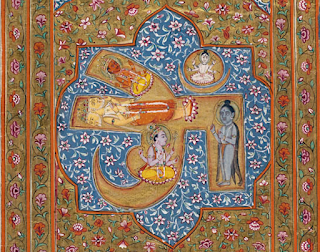Worship of Shiva as Shivalinga during Gupta Era
The Gupta Empire survived from around 320 to 550 CE. They worshipped several Hindu gods and goddesses, Shiva being one of the prominent deities. As the empire spread and grew, so did the holy beings that were worshipped. All the commonly worshipped gods now were referred to by new names and were given new identities, Shiva included. He was Pashupathi, Rudra, Mahadeva and Shambu. All these identities and stories were composed for the Shiva Purana, Sanskrit folklore. Followers of the protagonist of these legends were termed worshippers of Shivaism. Although there were scriptures and inscriptions, religious depictions, during this period relied heavily on art and architecture. Several temples and other religious spaces were constructed in the Gupta empire. One of these marvellous creations is Elephanta’s rock temple. Trimurthi, a large, nearly 20 foot, three-headed Shiva statue is found at this temple. The three heads represent Shiva’s three role; they’re creating, preserving and destroying.
Worship of the Shiva Linga
The more common and one of the earliest instances of these pious architectures were the cave-temples which are popularly known for their carvings of mythologies and sculptures of deities. The most eminent of these sculptures is the Shiva Linga. The Shiva Linga composes of three parts; they’re the Brahma-Pitha, the Vishnu-Pitha and the Shiva-Pitha, the Trimurti (Trinity).
The worship of the Shiva Linga is often assumed to be the worship of the reproduction functions. The word ‘Linga’ in Sanskrit symbolises the phallus (an erect penis) and the base of the Linga rests on the Yoni, which represents the vagina. The harmony between the Linga and Yoni in a ‘Lingam’ is hence, explained as sexual intercourse by scholars. The assumption of phallic worship is justified since during the Gupta era, individuals were exposed and accepting of sexual behaviour as a consequence of the famous Gupta text, Kama Sutra.
Worship of Ardhanarishvara
 |
| Brahma, Vishnu & Shiva within an OM, Mahabharata manuscrip, 1795, Public Domain |
Worship of the Shiva Linga
The more common and one of the earliest instances of these pious architectures were the cave-temples which are popularly known for their carvings of mythologies and sculptures of deities. The most eminent of these sculptures is the Shiva Linga. The Shiva Linga composes of three parts; they’re the Brahma-Pitha, the Vishnu-Pitha and the Shiva-Pitha, the Trimurti (Trinity).
 |
| Giant Shiva Linga located near the Laxmi Narasimha statue at Hampi, 2012, Creative Commons |
 |
| Kamasutra vatsyayana, Kamasutra vatsyayana Oriental Collection, 2014, Creative Commons |
Worship of Ardhanarishvara
The Guptas also idolised Shiva alongside his wife, Goddess Parvati. The engravings of Shiva and Parvathi state descriptions and illustrate the popularity of the gods during the Gupta period. Several religious transcripts like Agamas, Tantras and Puranas were created in this era, which consisted of folklore of Lord Shiva and Parvati coming together as one- Ardharishvarva. It is the androgynous profile of Lord Shiva and his spouse, Parvati. Ardhanarishvara represents both genders, male and female sewn together in the middle. The right side of the figure is commonly Shiva, the male that stands for his traditional, powerful characteristics and the left part symbolises Parvati and her femininity. The Ardharishvarva illustrates the inseparability of the gods and how one balances the other, perfectly. So essentially, Shiva is the perfect husband.
 |
| Image of Shiva and Parvathi, Smithsonian Institute’s collections, 2010, Public Domain |
The quintessential Ardharishvarva was modelled during the Gupta era and the worship of this religious figure spread to the rest of India. While the representation is still a accepted form that is present in a large number of Shiva temples, only a handful of temples are solely devoted to the worship of this deity, perhaps because later, this deity was viewed as Shiva reincarnated as a transexual and this depiction wasn't favoured by all Saivite worshippers.
 |
| A seated Ardhanarishvara with both the vahanas, Himalayan Academy Publications, 2007, Creative Commons |

Comments
Post a Comment